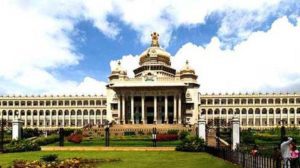SARFAESI Act 2002 | UPSC – IAS
The Securitisation and Reconstruction of Financial Assets and Enforcement of Securities Interest Act, 2002 (also known as the SARFAESI Act) is an Indian law. It allows banks and other financial institution to auction residential or commercial properties(of Defaulter) to recover loans
Details About SARFAESI Act
- The law does not apply to unsecured loans, loans below ₹100,000 or where remaining debt is below 20% of the original principal.
- It was framed to address the problem of NPA’s (Non-Performing Assets) or bad assets.
- It allows secured creditors to take possession over a collateral, against which a loan had been provided, upon a default in repayment.
- It lets the banks as well as other financial institutions to auction commercial or residential properties for the purpose of loan recovery.
- It gives detailed provisions for the formation and activities of Asset Securitization Companies (SCs) and Reconstruction Companies (RCs).
- RBI is the regulator for these institutions.
- It provides the legal framework for securitization activities in India.
- The Government is not involved in commercial decisions or recovery proceedings of banks or financial institutions.
- The SARFAESI Act does not differentiate between debtors/borrowers on any basis, including the financial status or debt value.
- Any aggrieved debtor/borrower has recourse to filing appeal in the Debts Recovery Tribunal (DRT) against action under the SARFAESI Act.
- The Act was amended in 2016, to empower the ARCs and to enhance the effectiveness of asset reconstruction under the new bankruptcy law.
- It also gave more regulatory powers to the RBI on the working of ARCs.
The Act provides three methods for recovery of NPAs,
- Securitization – It refers to the process of converting loans and other financial assets into marketable securities worth selling to the investors.
- Asset Reconstruction – It refers to conversion of non-performing assets into performing assets.
- Enforcement of Security without the intervention of the Court.




